Today we set out to spend some time in the museum
dedicated to the history of the Jews in Poland. It is a bus ride from where we
are in our apartment, just opposite a huge store labelled Louis Vuitton – I’m
not sure whether the whole building is theirs but its’ quite impressive. The
bus took us to the nearest point to the museum and we alighted at a square
known as Krasińskich square. Unknown to us but what became immediately apparent
was that this was an important site – it housed the commemorative statues that
recognised the huge sacrifices that the Poles made during the Warsaw uprising
which commenced on 1st August 1944. The Polish underground, aided
and abetted by their government in exile in the UK, felt that the time was
right to rise up against their Nazi oppressors. By now the Soviet troops were
on the opposite banks of the river Vistula so were in a position to assist.
However, they didn’t reckon on Stalin, who told his forces to stay put and
wouldn’t offer air support, despite the fact that it was less than 5 minutes’
flying time and his allies, namely Churchill and Roosevelt, were pleading with
him to help.
The upshot was that 16,000 resistance fighters died, something
like 150,000 – 200,000 civilians were killed and the whole of Warsaw, pretty
much, was razed to the ground by the retreating and vengeful German forces,
acting under the direct command of Hitler. WW2 has a long list of infamies but
I reckon Stalin, may he rot in hell, has his name here in joint first with
Hitler.
The Polin Museum of the History of the Polish Jews is
situated some 500m from Krasińskish square. It was deliberately built in the
middle of what used to be the Jewish Ghetto, once again infamous in history as
the site of mass genocide and futile resistance when the Nazis initially
forcibly move the best part of half a million people into an area that they
fenced off before shipping most of them off to Treblinka to be exterminated.
The survivors (about 60,000), put up resistance when the troops came in to
finish the job but as they were hopelessly outgunned the outcome was
inevitable. Brave souls.
The museum itself is an arresting, modern building,
designed specifically for this function.
It has an ingenious layout inside with
a number of galleries that are separate and keep you interested, indeed
fascinated. I’m going to find it very hard, indeed impossible to capture all
that we learnt and discovered today. We were in there for well over 5 hours and
all 3 of us were absorbed throughout. The problem is with trying to summarize a
1000 year story into a paragraph or two is that a whole lot of stuff happens
during that time (!) , not least of which is the changing of the borders and
rulers of Poland and indeed, the very existence of Poland itself. At least the
UK is defined by hard borders ie the sea but here things are much more fluid.
The heyday of Poland and its’ Jewish inhabitants was probably in the period commencing
July 1569 when Poland formally formed a union with neighbouring Lithuania,
resulting in a Commonwealth with one
elected leader and covering a land area of over a million km² and with a
multi-ethnic population of 11 million. This commonwealth enabled the Jews to
flourish and by 1764, when it all began to crumble with the first partition,
there was an estimated population of some 750,000 Jews living there – a very
considerable number considering that the estimated worldwide population was
only 1.
2 million.
The Jewish story is complex and the museum tries to
tell the story through the eyes of individuals that lived during specific
periods of time. These are real people, with documentary evidence of their
existence and stories, which makes it all the more fascinating. As I said
earlier, I can’t really relate all that we read a during the 5 hours that we
were inside, rather I will provide a couple of URL’s if you are at all
interested :-
Of course, there was a significant section of the
museum dedicated to the monstrous goings on of the Second World War, when over
6 million Jews were exterminated by the Nazis. Given that the museum is
actually located within the original Warsaw ghetto, the story of the ghetto was
covered in some detail and very harrowing it was too. Moreover, even the tiny
surviving population of Jews didn’t have a good time in the decades after the
war, they experienced pogroms and a State determined to get rid of them by
encouraging them to emigrate.
However, the story ends on a positive note and
today there are numerous cultural events throughout Poland which celebrate the
Polish Jewish population, a population which, once again is on the increase.
The museum closes at 18:00 and the first warning
claxon sounded at 17:40 so that by 17:50 we were out of the building, looking
at the torrential rain that had just started. A dash to a nearby taxi and a
ride back to our part of town got us into the apartment by 18:20, time for a
quick drink then we went out in search of dinner. We weren’t that successful,
we had an OK meal, not really worth describing and then it was bed time, another
good day notched up.

 Warsaw, Masovian Voivodeship, Poland
Warsaw, Masovian Voivodeship, Poland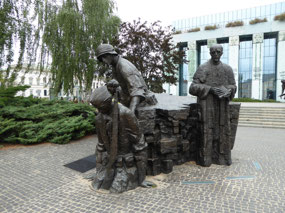
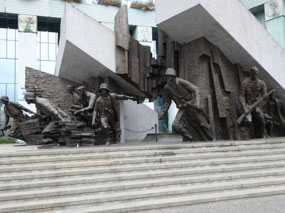
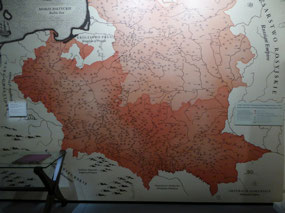
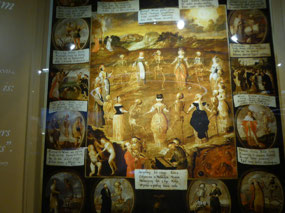
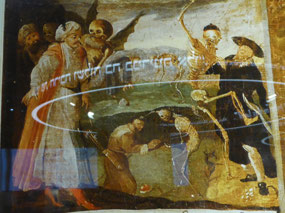



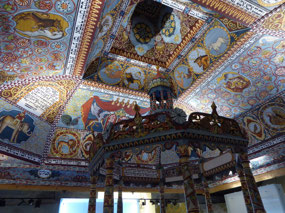
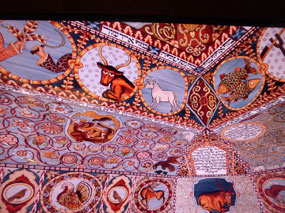
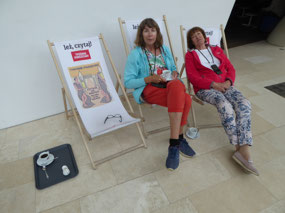
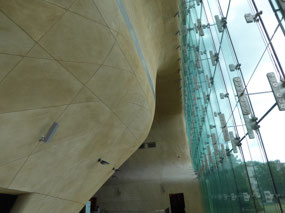
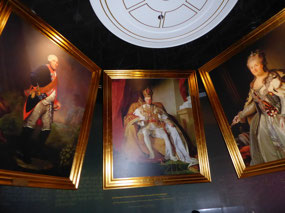
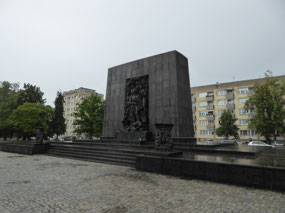
2025-05-23